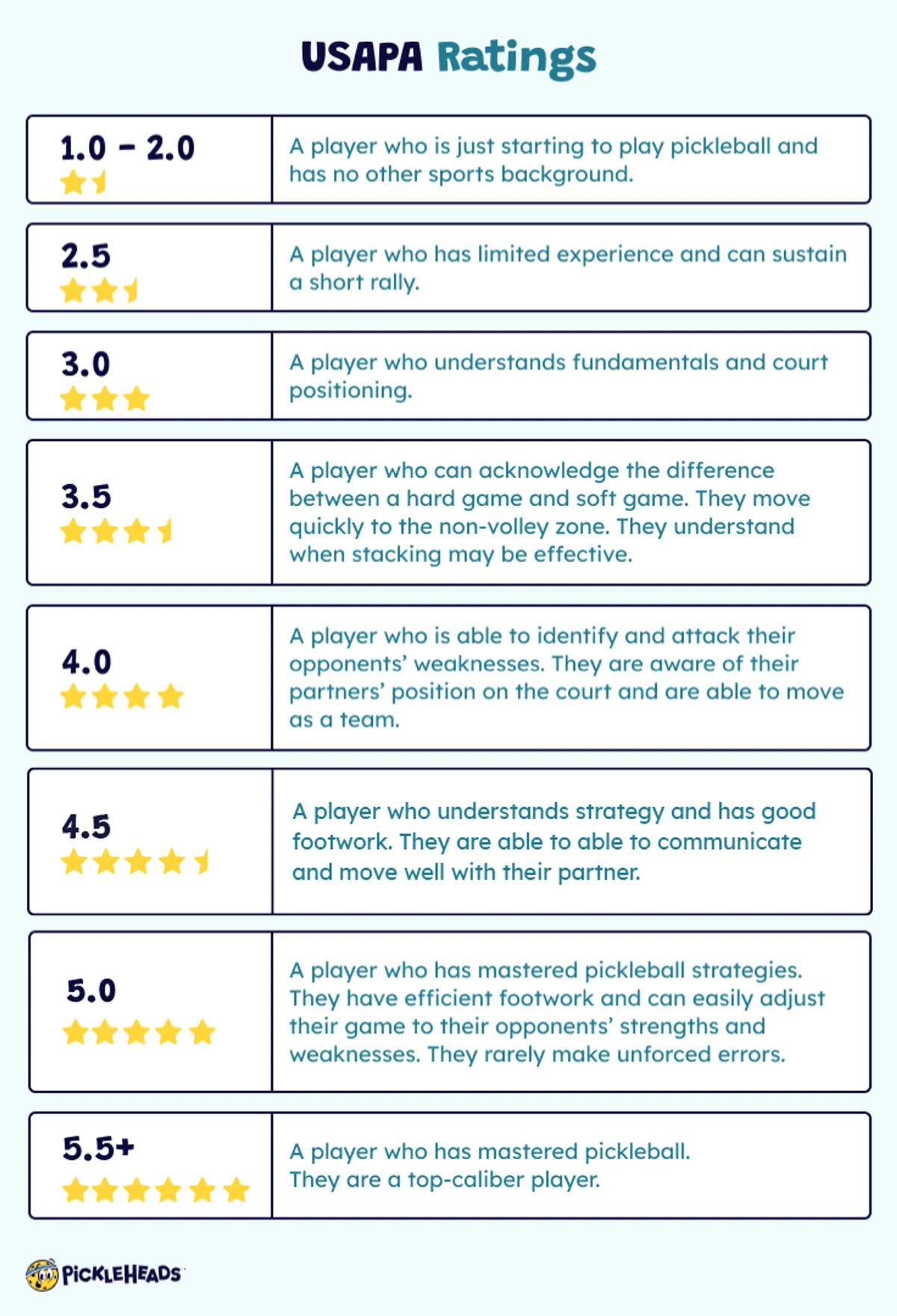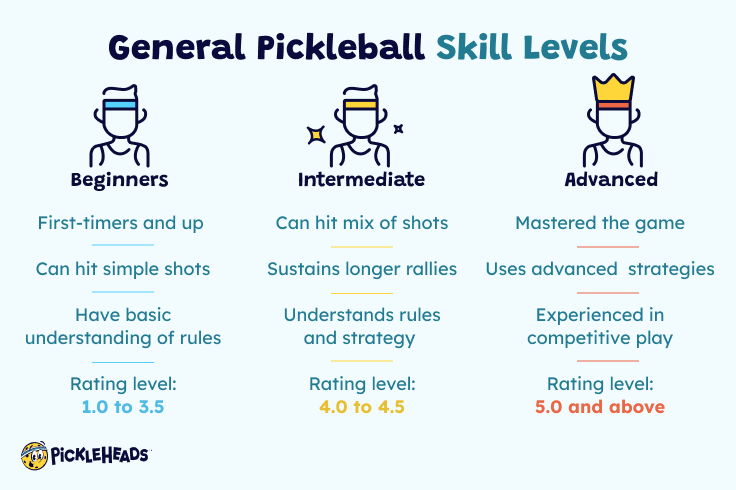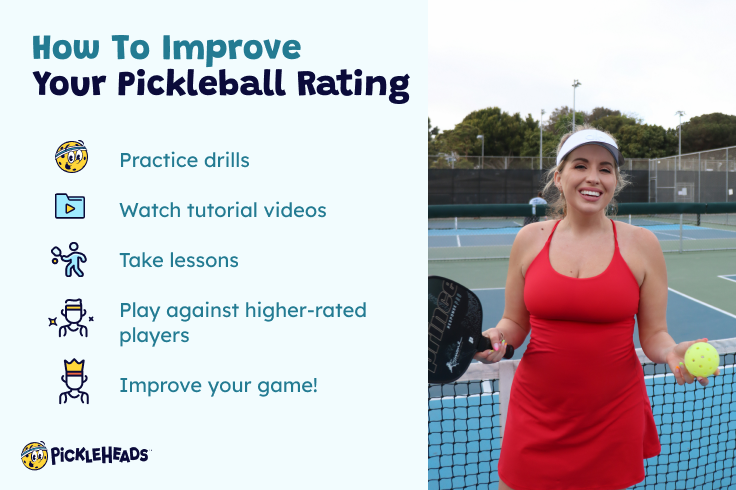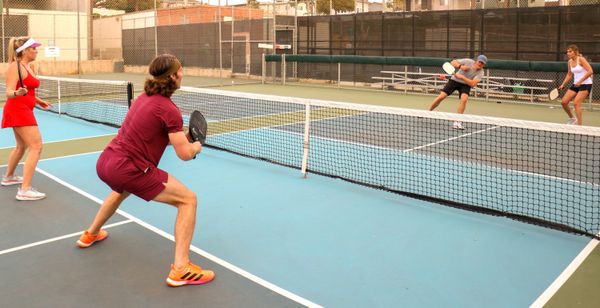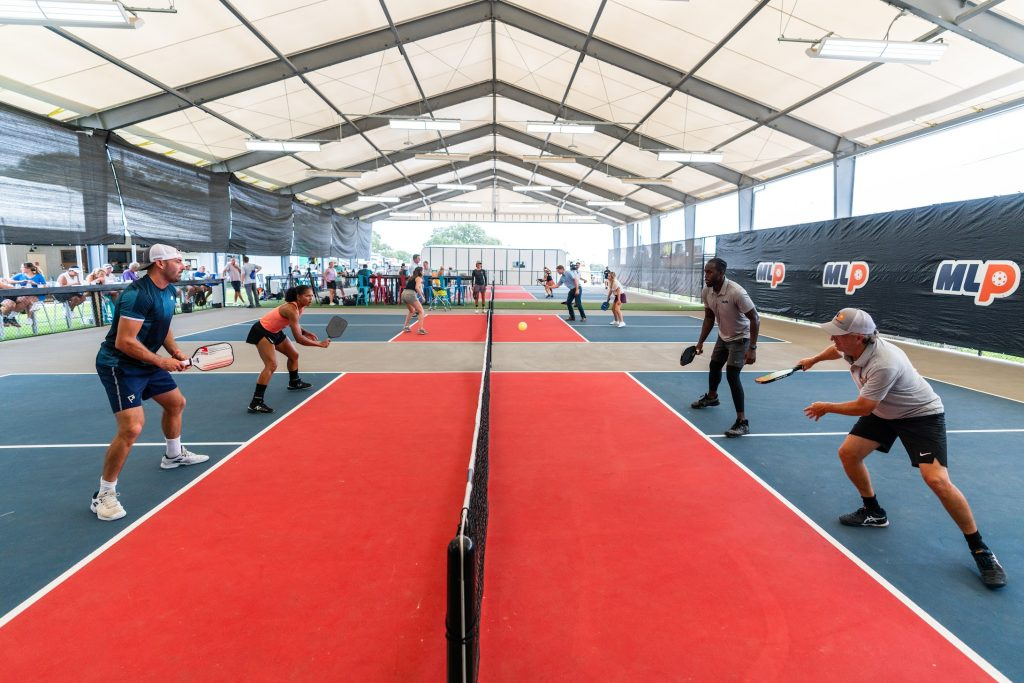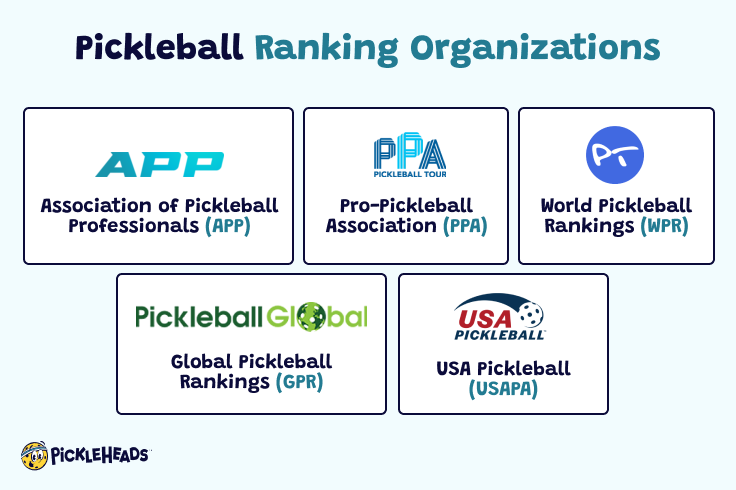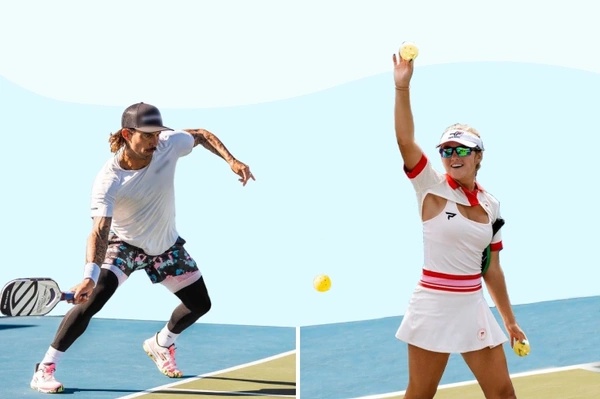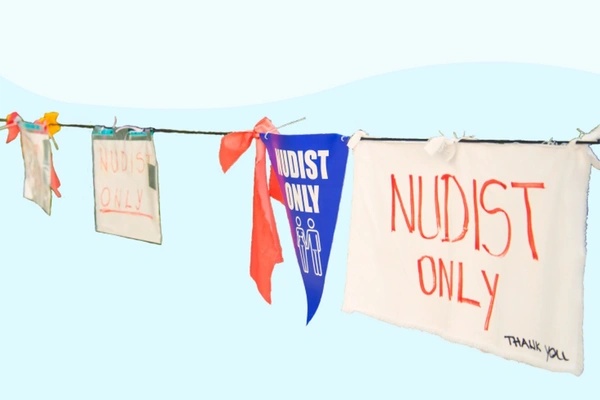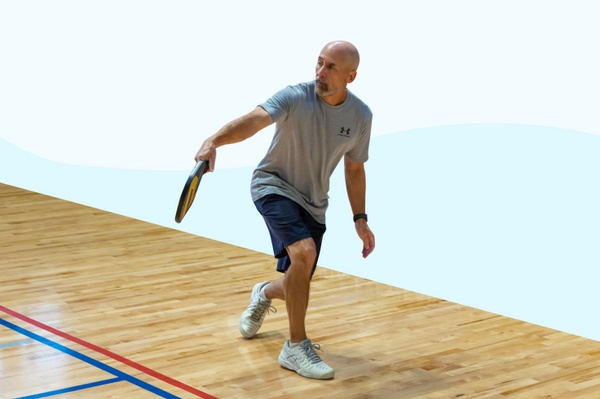
Quick Links
Ever wonder what your pickleball rating is?
Your pickleball rating is a gauge of how good you are at the game. So, do you know what your pickleball skill rating is? Or how to improve that rating?
In pickleball, there are several different ways your ability can be assessed and ranked.
Read on to learn all about pickleball ratings, and why they are important. Once you understand the system, take our short quiz to get your own pickleball rating!
The Pickleball Self-Rating System
First up, let's look at the pickleball “self-rating” system, and how it works. This method is exactly as it sounds—you give yourself a skill rating between 1.0 and 6.0, based on certain criteria.
This means you have to be honest with yourself when assessing your skills!
Luckily, the USA Pickleball association publishes a list of guidelines on how you should score yourself. The score you get depends on the pickleball skills you have mastered.
The USAPA pickleball rating instructions are as follows:
Pickleball Ratings Chart
| Self-Rating Score | Self-Rating Guideline |
| 1.0-2.0 |
|
| 2.5 |
|
| 3.0 |
|
| 3.5 |
|
| 4.0 |
|
| 4.5 |
|
| 5.0 |
|
| 5.5 and up |
|
Still not sure where you fit? Use this simplified chart to find the description that best matches your game:
General Pickleball Skill Levels
If you’re not yet ready to give yourself a score out of 6, there’s a simpler system known as a “general pickleball skill level.”
Here, you have three options: Beginner, Intermediate and Advanced:
Many clubs and leagues use these classifications as it’s a great way to divide up the players who will have fun playing together.
In this pickleball rating system, beginners range from those who are playing for the first time, to the players who can sustain a short rally and are starting to try out some backhand shots.
Using the pickleball rating chart above, these players would range from 1.0 to 3.5. They can hit simple shots, and have a basic understanding of the rules and strategy.
Intermediate players, using this pickleball rating system, are players with a rating of around 4.0 to 4.5. They understand the rules and strategy and can sustain a rally using a combination of shots, including backhands.
These players can hit shots with some spin and good aim, and don’t make too many unforced errors. This group is probably the largest at your local club or league.
Advanced players would score a 5.0 and above, and are those players who have really mastered the game.
Intermediate players are intimidated by the idea of playing against them. They can spot weaknesses in their opponents, and target them with precision. Advanced players can execute all types of shots consistently, and understand the finer tactics of the game.
These three pickleball ratings are a great way of dividing up players in open play sessions, to make sure everyone plays with opponents of a similar skill level.
That way, everyone can have fun, which is what pickleball is all about!
Why Is Knowing Your Pickleball Rating Important?
So now that we’ve looked at two of the ways that you can work out your pickleball skill rating, let's look at why it’s important.
Whether you’re a beginner or a pro, it’s never fun to play against opponents with an entirely different skill level to yours. It’s not fun for either side.
So by knowing your pickleball rating, you can avoid the frustration of playing against someone who is way more advanced (or way less advanced) than you are. Knowing your pickleball skill rating makes it easier for everyone to enjoy the game to its fullest.
As your pickleball journey progresses, your rating will also come in handy when registering for tournaments and events.
How To Improve Your Pickleball Rating
So here’s the million-dollar question—how do I improve my pickleball rating? The simple answer is—get better at the game!
To improve your game, the best way is to practice. Play as much pickleball as you can. Do practice drills when you can’t find an opponent, and watch tutorials on youtube when you’re off the court.
Taking pickleball lessons is another great way to up your pickleball rating. A coach will be able to hone your skills and give you great pointers, tips, and drills.
Finally, by pushing your limits you’ll find that your game improves. Play against higher-rated players when you can, and you’ll find that the challenge will do wonders for your skill levels.
USA Pickleball Tournament Player Ratings (UTPR)
Next up, we’re going to delve into another system of pickleball skill ratings. This system, now best known as UTPR (USA Pickleball Tournament Player Ratings), was formerly known as the “USAPA pickleball ratings”.
So if you hear either term, just remember that they’re the same thing.
The UTPR is a rating that’s based solely on your previous performance in pickleball tournaments. Only members of USA Pickleball that compete in their competitions can have a UTPR.
This score is more accurate than the self-rating system, as it is purely based on your pickleball playing history. It’s also a little complicated…
Get your calculators out!!
UTPR scores range from 0.000 to 6.999. Your score goes up when you win, and down when you lose. However, your score only changes when you play sanctioned, official tournaments.
The amount that your score changes is based on the Elo rating system, a clever mathematical formula in which the winner takes points from the loser’s rating.
If a low-rated player beats a higher-rated player, this is an unexpected win, so the winner takes more points from the loser. If the higher-rated player wins, as would be expected, he takes a lower amount of points from the loser.
This means that the scoring system is fair and self-correcting. Over time, a player's UTPR score will genuinely reflect their skill level.
When playing doubles, you add your score to your partner's score and divide it by two to get your UTPR rating.
Your UPTR pickleball rating is used in tournaments. Usually, rather than using a four-digit score, in a tournament, you round down to give yourself a two-digit score. So if you have a UPTR of 4.255, you have a two-digit score of 4.0.
When playing in a tournament, you must always play up in skill level, so if you’re a 4.0, you’ll be playing in the 4.5 category or higher.
You can play down in age in a pickleball tournament. So if you’re 42, you can play in the over 20s bracket, if you want to, rather than the over 40s.
So remember, you play up in skill level, and down in age.
Dreamland Universal Pickleball Ratings
Photo by Dreamland
Finally, we have the “Dreamland Universal Pickleball Ratings”.
This system was devised by Steve Kuhn, the owner of Dreamland, an awesome pickleball-based entertainment center near Austin, Texas.
The DUPR, as it is known, is a new pickleball rating system that embraces a freer way of calculating a player's ranking (the ‘D’ can also stand for ‘Dynamic’).
In this system, a player can self-report their own wins and losses in any matches they play, as long as one other player verifies the result.
This means that every match you play is counted towards your pickleball rating, even though you might never play an official tournament. All you need to do is report your wins and losses to DUPR and your rating will be calculated.
Your DUPR rating ranges from 2.000 to 8.000 and is calculated based on the same Elo rating system as the UTPR.
Over time, this score adapts to your real skill level, as there is weight put on your most recent matches.
The idea of the DUPR is to democratize pickleball skill ratings and allow everyone to have a rating. Therefore, the DUPR acts as a centralized hub where anyone can record and store their pickleball match results.
Pickleball Ranking Organizations
There are currently four pickleball ranking organizations in operation, and a new one is expected to be up and running soon.
APP Rankings
First up, we have the Association of Pickleball Professionals (APP). The APP organizes a series of international tournaments where both professional and amateur pickleball players can compete.
Using the results of these tournaments they calculate a ranking known as the APP standings list.
PPA Rankings
The Pro-Pickleball Association is another organization that holds a tournament tour. This is where the pros play for big prizes, and players are ranked based on their performance on the PPA tour.
World Pickleball Rankings
The World Pickleball Rankings are known as the gold standard for pickleball rankings.
They are calculated based on a professional pickleball player's performance in all official competitions and tournaments over a year, with the 15 best results taken into account.
Global Pickleball Rankings
Pickleball Global is a pickleball hub that connects pickleball players and clubs from around the world. They also publish a GPR ranking, that uses your 8 best results over the previous 52 weeks to assign you a standing.
What we love about this pickleball rating system is that it's an age-based system, that’s organized by state. So you can look up, for example, the best 19+ singles male player in Kentucky.
USA Pickleball Rankings (coming soon?)
The USAPA has announced recently that they have a brand new system of ranking. Watch this space for the latest news on USAPA pickleball ratings!
The Bottom Line
That’s it pickleheads, our rundown of the various pickleball rating systems has come to an end. We hope we’ve filled you in on all the different ways you can assess your pickleball skill level.
By categorizing yourself into a specific group, you’ll have a more rewarding, productive, and fun pickleball experience.
If you have any further questions about pickleball rating and ranking, just drop them in the box below. We’d love to hear from you!
